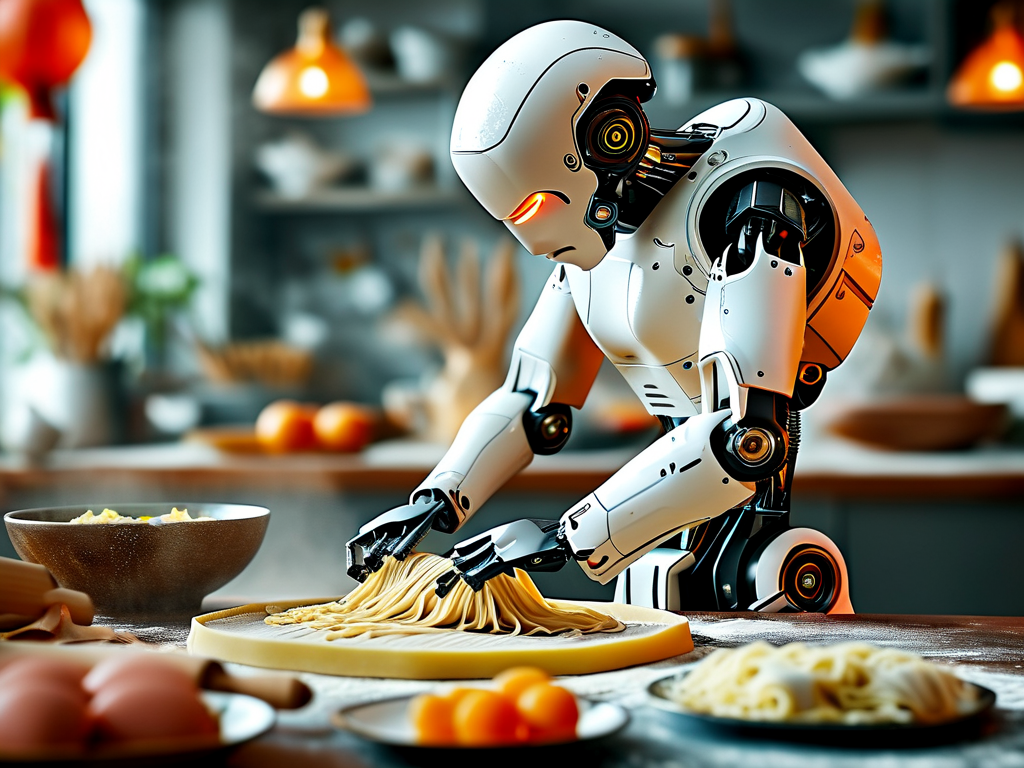In commercial kitchens across Asia, a quiet revolution is reshaping one of humanity's oldest culinary traditions. Robotic noodle-making systems, equipped with precision actuators and machine learning algorithms, are now producing hand-pulled lamian and udon with mechanical perfection. This technological leap addresses multiple challenges in the food service industry while preserving the essence of traditional noodle craftsmanship.

The core innovation lies in specialized extrusion mechanisms that replicate human hand movements. Shanghai-based TechChef Solutions recently unveiled their NoodleMaster 3000, featuring 27-axis robotic arms capable of executing complex twisting and stretching maneuvers. Unlike conventional pasta machines that simply press dough through dies, these robots analyze gluten development in real-time using embedded torque sensors, adjusting pulling force and rhythm to achieve optimal texture.
Sanitation advantages have become a key driver for adoption. At Tokyo's automated ramen factory Yamato Robotics, the entire production process occurs in ISO Class 5 cleanrooms. "Our noodle-bots never touch surfaces exposed to open air until final packaging," explains Chief Engineer Hiro Tanaka. This closed-loop system has reduced microbial contamination incidents by 89% compared to human-operated kitchens.
Surprisingly, the technology is enhancing rather than replacing artisanal techniques. In Lanzhou, China, where hand-pulled noodles hold cultural significance, master chef Zhang Wei collaborates with engineers to program robots with regional pulling styles. "We've encoded 18 traditional techniques into the system's memory," Zhang reveals. "The machines can now create noodles matching specific village traditions that were at risk of being forgotten."
Energy efficiency metrics demonstrate unexpected benefits. A recent MIT study found robotic noodle stations consume 40% less energy per kilogram produced than conventional methods. The secret lies in optimized motion paths and heat recovery systems that capture steam energy during the blanching process. Some models even generate biogas from starch-rich wastewater.
Consumer acceptance tests yield fascinating insights. In blind tastings conducted by the Culinary Institute of America, 72% of participants actually preferred robot-made noodles for consistency in texture. However, 68% said they'd pay 15% more for "human-certified" versions, creating new hybrid business models. Restaurants like Noodle Paradox in Singapore now feature open kitchens where diners watch robotic arms prepare dough before human chefs add final hand-stretched touches.
The technology's ripple effects extend beyond restaurants. Emergency response organizations are testing portable noodle robots for disaster relief operations. UN World Food Program trials in Nepal demonstrated that a single NS-5 noodlebot can produce 3,000 nutrient-fortified noodle meals daily using local water sources and flour blends.
As intellectual property battles heat up, patent filings reveal intense competition. Between 2020-2023, the US Patent Office recorded 412% increase in food robotics applications, with noodle-making tech accounting for 37% of submissions. Startups like Boston's DoughAI are developing quantum computing-powered systems that simulate molecular interactions in dough fermentation.
While skeptics argue about cultural preservation, UNESCO recently added robotic noodle-making to its Intangible Cultural Heritage safeguarding program. As project director Marie Claude puts it: "This isn't about machines replacing tradition – it's about creating living archives that ensure culinary knowledge survives for future generations." The next phase may see home kitchen models, with prototypes like Whisk.Me's NoodlePod already crowdfunding $2.8 million for countertop units promising restaurant-quality results in 90 seconds.
From street food stalls to Michelin-starred restaurants, the noodle robotics movement demonstrates how technology can amplify rather than replace human culinary expression. As these systems continue evolving, they promise to reshape global food systems while preserving flavors that have comforted humanity for millennia. The true test may come when these machines learn to appreciate their own creations – but that's a story for the next chapter in food tech innovation.









